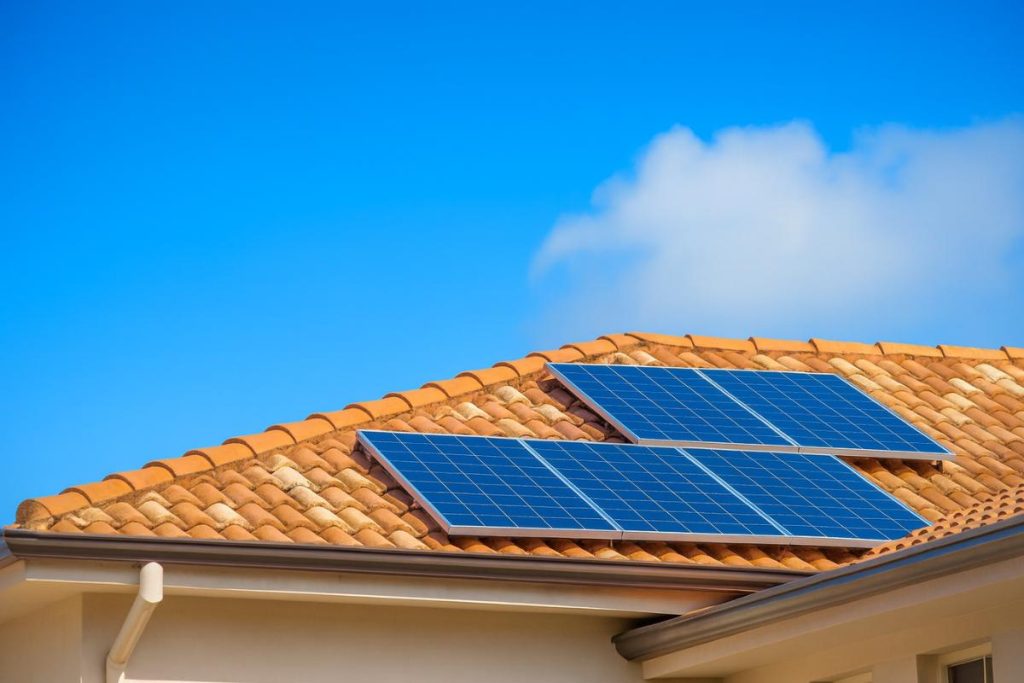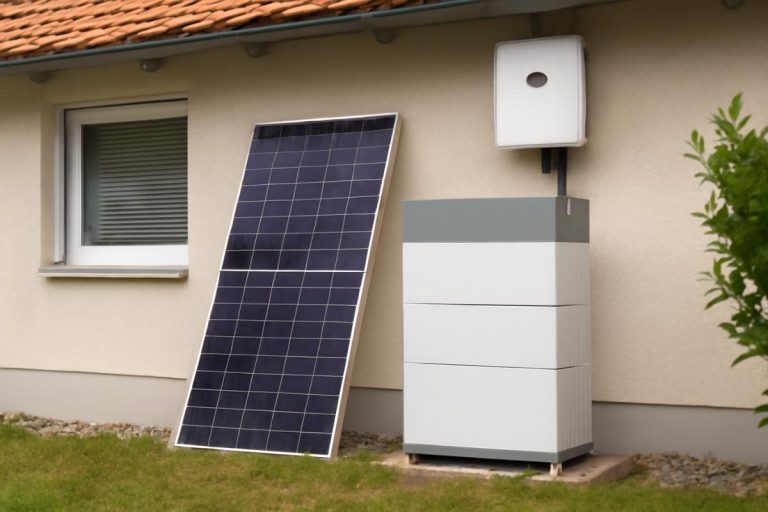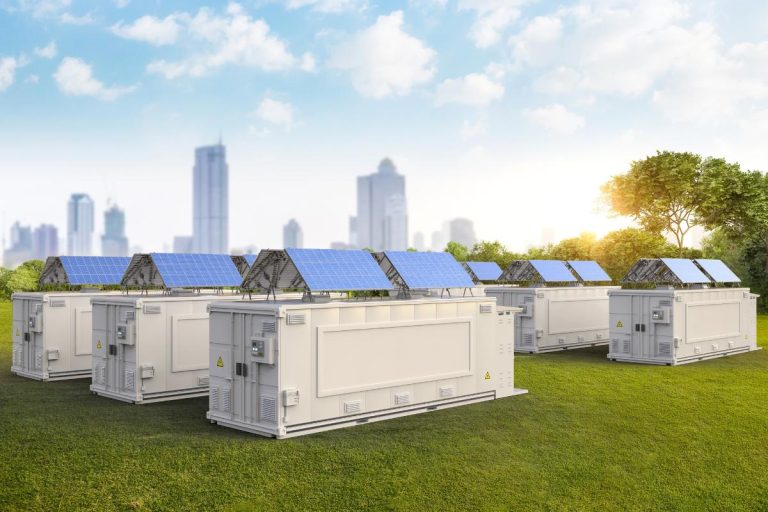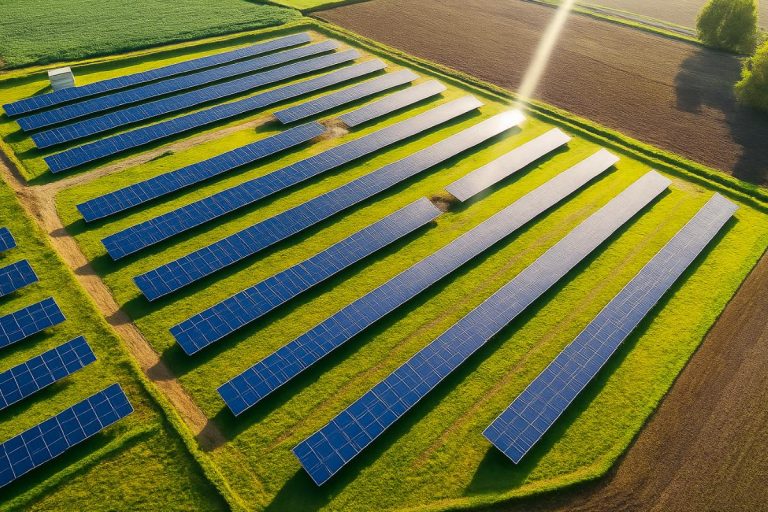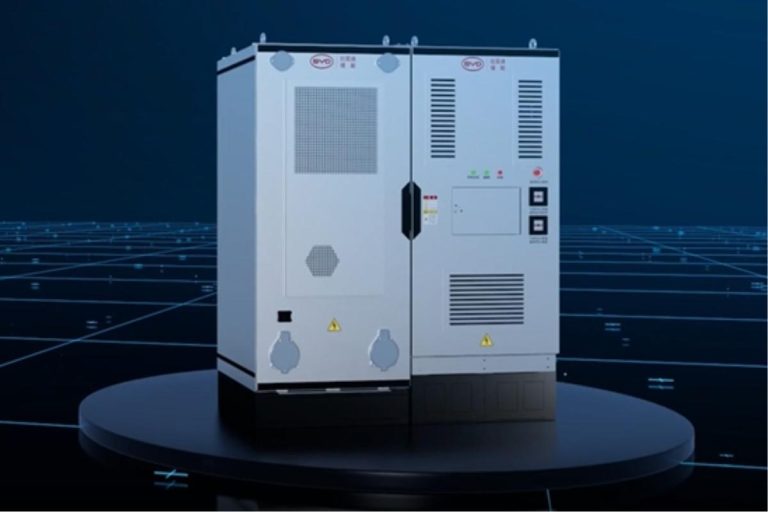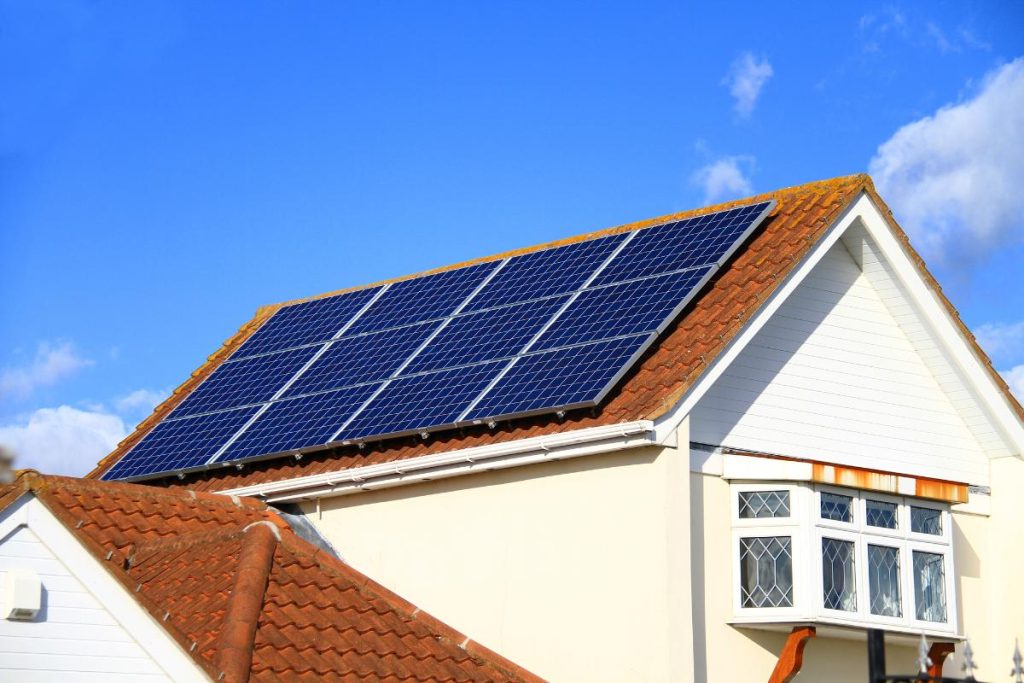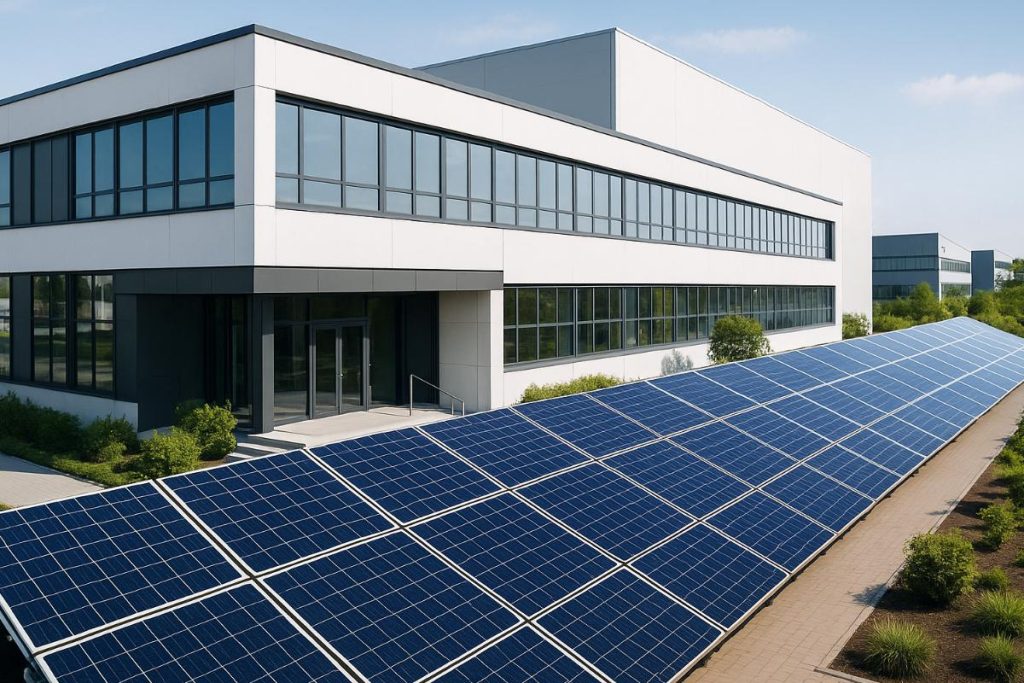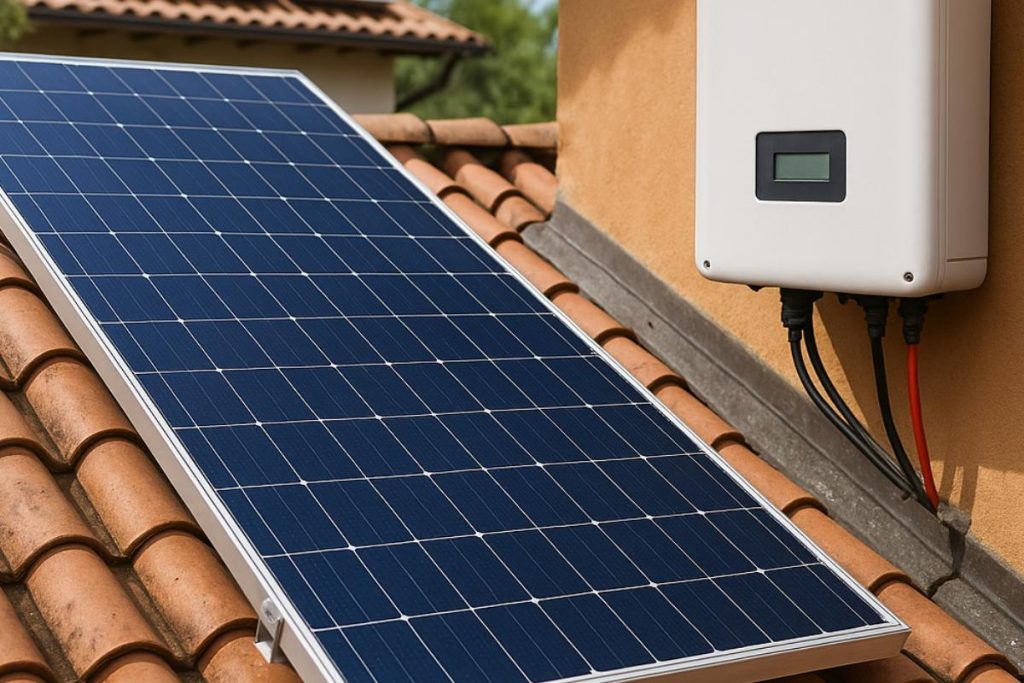The concept of Grid-Zero has been gaining more and more prominence in the energy sector, especially with the growing search for sustainable and economical solutions for electricity consumption. But what is Grid-Zero anyway? How does it work? And why can it be an excellent option for consumers and companies?
In this post, we'll explore everything about this technology, from its definition to its practical applications, advantages and the equipment needed to implement it.
What does Grid-Zero mean?
Grid-Zero, also known as "Grid-Zero system", is a solar photovoltaic power generation configuration that seeks to balance energy production and consumption in real time. The main objective is to avoid exporting surplus energy to the electricity grid, keeping local consumption equal to generation.
In other words, the system is designed so that the energy generated by the solar panels is fully consumed on site, with no leftovers.
Difference between Grid-Zero, On-Grid and Off-Grid
In order to better understand Grid-Zero, it is important to differentiate it from other solar energy:
- On-Grid: systems connected to the conventional electricity grid. They allow surplus energy to be exported to the grid, which can generate energy credits (as in the energy compensation system in Brazil).
- Off-Grid: systems that are totally independent of the electricity grid. They use batteries to store the energy generated and supply consumption when there is no generation (such as at night).
- Grid-Zero: a system that is connected to the grid but does not export energy. It adjusts generation so that there is no surplus, maintaining a balance between production and consumption.
Check out everything you need to know about solar energy generation.
Why is the term Grid-Zero "system" in quotation marks?
The term Grid-Zero "system" is in quotation marks because it is not actually an isolated system, but a control strategy applied to photovoltaic systems connected to the grid. It uses specific equipment and technologies to ensure that the energy generated is consumed locally, with no surplus.
How does Grid-Zero work?
After all, how does Grid-Zero work and how does it ensure that there is no surplus solar energy produced?
Energy export control strategy
Grid-Zero works through a control strategy that adjusts the generation of solar energy so that it does not exceed the instantaneous consumption of the site. This is done by means of inverters and smart meters, which monitor consumption and generation in real time. When generation is about to exceed consumption, the system reduces energy production to avoid export.
Operation in mains-connected systems
In Grid-Zero systems, the connection to the electricity grid is maintained as a backup. This ensures that, at times of low generation (such as on cloudy days or at night), the site continues to receive energy from the grid. However, the priority is always to consume the energy generated by the solar panels.
Understand how solar energy works at night.
The role of inverters and smart meters
Inverters are the "brains" of the Grid-Zero system. They convert the energy generated by the solar panels (direct current) into usable energy for the equipment (alternating current). In addition, compatible inverters have advanced control features that allow generation to be adjusted according to consumption.
Smart meters, on the other hand, monitor the flow of energy between the photovoltaic system, the place of consumption and the electricity grid. They provide real-time data, which is used by the inverters to make decisions about energy generation.
Grid-Zero applications
Grid-Zero reduces energy costs, avoids grid overloads, complies with restrictive regulations and maximizes self-consumption, making it ideal for locations with energy injection restrictions.
Learn more about each of these applications below.
Reduced electricity costs
One of the main applications of Grid-Zero is to reduce electricity costs. By avoiding the export of surplus energy, the system maximizes self-consumption, which results in less dependence on the electricity grid and, consequently, lower electricity bills.
Solution for networks with capacity restrictions
In some regions, the electricity grid may have capacity restrictions, which limit the amount of energy that can be injected into it. This technology is an ideal solution for these cases, as it does not export energy, avoiding overloads in the network.
Use in locations with specific regulations
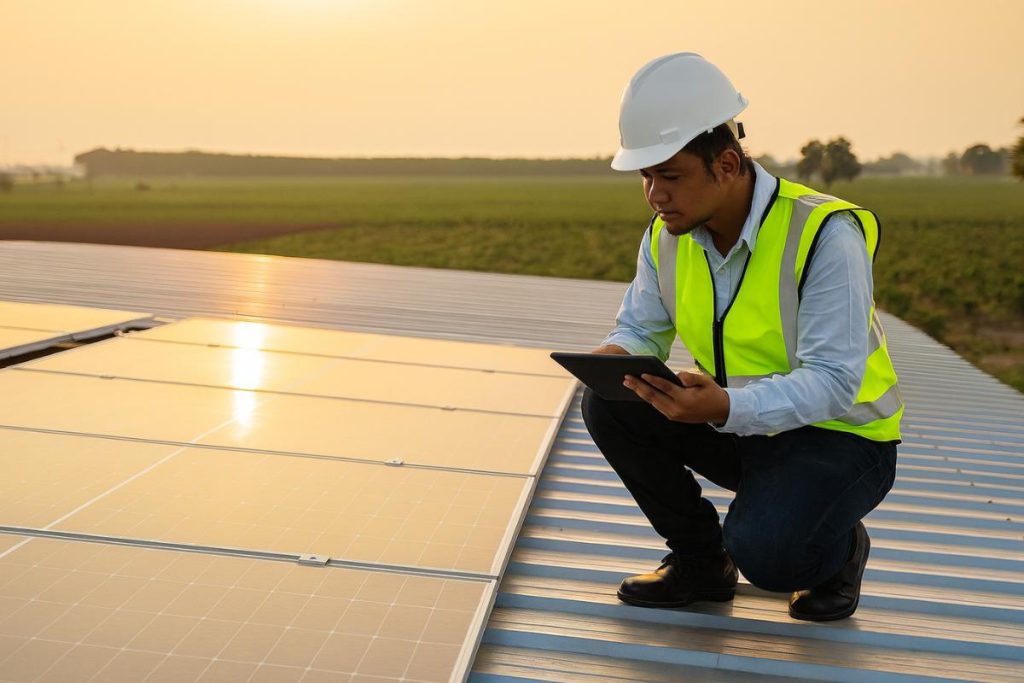
Some energy utilities have specific regulations that limit or hinder the export of energy to the grid. Grid-Zero is a viable alternative for these locations, as it adapts to the rules without compromising the efficiency of the photovoltaic system.
Why approve a Grid-Zero system?
Approval is an essential process to ensure that the Grid-Zero system complies with the technical standards and regulations of the energy utilities. It ensures the reliability of the system and the quality of the energy supplied.
Approval steps
The homologation of a Grid-Zero system is an essential process to ensure that the installation complies with the technical standards and regulations of the energy concessionaires. Here are the main steps for approval:
1. Photovoltaic system design
A qualified professional (engineer or technician) should draw up the system design, taking into account the power of the solar panels, inverters, smart meters and other equipment.
The project must include calculations of energy generation, local consumption and equipment sizing to ensure that the system operates without exporting surplus energy.
The necessary documentation must also be prepared, such as a descriptive memorial, electrical diagrams and technical specifications for the equipment.
2. Submitting the project to the concessionaire
The project must be sent to the local energy utility for analysis and approval. This is usually done via an online platform.
You need to check whether there are any fees associated with the approval process and ensure that all the utility's requirements are met (e.g. ANEEL standards in Brazil).
3. System installation by qualified professionals
Installation must be carried out by an accredited company or professional, strictly following the approved project.
It is important to use inverters, smart meters and other compatible components certified by the relevant bodies (e.g. INMETRO in Brazil).
4. Inspection and approval by the concessionaire
After installation, the utility company must be notified to carry out an on-site inspection. During the inspection, tests are carried out to check that the system is operating correctly, without exporting energy to the grid.
If everything is in order, the utility company issues an approval report, releasing the system for operation.
5. Grid connection and operation
Once approved, the system can be connected to the electricity grid. After connection, it is important to monitor the system to ensure that it continues to operate within Grid-Zero parameters.
Advantages of Grid-Zero for consumers
Grid-Zero offers energy autonomy, reducing dependence on the grid and electricity bills. It promotes sustainability, adds value to properties and complies with restrictive regulations.
Shall we take a closer look at these advantages?
Autonomy and sustainability
This system allows consumers to generate and consume their own solar energy, reducing their dependence on the traditional electricity grid. This is especially advantageous in regions where the grid is unstable or where there are high energy tariffs. With Grid-Zero, consumers have greater control over their energy supply, ensuring that the energy generated by the solar panels is used efficiently on site.
- Grid backup: the connection to the grid is maintained as a backup, guaranteeing energy at times of low generation (such as at night or on cloudy days), but the focus is always on maximizing self-consumption.
- Independence in remote areas: in places where the electricity grid is non-existent or difficult to access, Grid-Zero can be a viable solution, especially when combined with storage systems (batteries).
In addition, by using solar energy, this technology contributes to reducing greenhouse gas emissions, such as CO₂, which are released when generating energy from conventional sources (e.g. coal or gas-fired thermoelectric plants). Solar energy is clean, renewable and non-polluting, which helps to combat climate change.
- Renewable energy: solar energy is an inexhaustible and sustainable source, unlike fossil fuels, which are finite and highly polluting.
- Reducing environmental impact: by avoiding the export of surplus energy, Grid-Zero also reduces the need to expand the electricity grid infrastructure, which can cause environmental impacts such as deforestation and interference with ecosystems.
Financial economics
Financial savings are one of the main advantages of the Grid-Zero system, attracting consumers who want to reduce electricity costs and optimize their investments in solar energy.
Grid-Zero is designed to ensure that all the energy generated by the solar panels is consumed on site, avoiding the export of surpluses to the electricity grid. This maximizes self-consumption, which results in a significant reduction in electricity bills.
- Less dependence on the grid: as solar energy is consumed locally, there is less need to buy energy from the utility, especially during the day when solar generation is greatest.
- Reducing tariffs: in many countries, the energy injected into the grid is compensated at a lower rate than the cost of the energy consumed from the grid. By avoiding exports, the system eliminates this difference, generating more savings.
- Less complexity: without the need to manage the injection of energy into the grid, the system is simpler and requires less equipment, which reduces installation and maintenance costs.
In places where the injection of energy into the grid is limited or prohibited, Grid-Zero allows consumers to take advantage of solar energy without breaking the rules, avoiding fines or additional costs to adapt the system.
Property valuation
Property appreciation is a significant advantage of the system, especially in a real estate market that is increasingly focused on sustainability and energy efficiency.
With growing awareness of environmental issues, many buyers are looking for properties that incorporate sustainable solutions. Grid-Zero, by using solar energy and reducing dependence on the conventional electricity grid, attracts buyers who value sustainability and environmental responsibility.
- Competitive edge: a property with a Grid-Zero system stands out in the market because it offers a modern solution that is in line with global trends in reducing carbon emissions.
- Attracting specific niches: buyers who prioritize energy efficiency and long-term cost savings tend to be more interested in properties with photovoltaic systems.
What's more, with the global trend towards stricter regulations regarding energy efficiency and sustainability, properties that already have systems like Grid-Zero are ahead of future requirements. This can avoid additional costs for the future owner, such as the need to install photovoltaic systems at a later date.
Equipment needed to implement Grid-Zero
To implement Grid-Zero, you need: inverters compatible with export control, smart meters for monitoring and Exported Power Managers (EPM) for precise generation adjustment.
Compatible inverters
Inverters are essential components in a Grid-Zero system, as they play a central role in the control and efficiency of the system. They are responsible for converting the energy generated by solar panels (direct current - DC) into energy usable by electrical equipment (alternating current - AC). In the case of Grid-Zero, the inverters need to have specific functionalities to ensure that the energy generated is consumed locally, without exporting it to the grid.
Grid-Zero inverters are able to adjust power generation in real time, based on the instantaneous consumption of the site. This is done by means of intelligent algorithms that monitor the flow of energy.
When consumption is lower than generation, the inverter reduces energy production to prevent the surplus from being sent to the grid.
One of the main functions of inverters is to limit the export of energy to the grid to zero (or to a minimum value allowed by local regulations). This is done by means of advanced controls that adjust the inverter's output power.
Smart meters
The inverters integrate with smart meters, which monitor energy consumption on site. This communication allows the inverter to adjust generation precisely, maintaining a balance between production and consumption.
This integration is essential to ensure that the system operates within the Grid-Zero parameters.
Exported Power Managers (EPM)
Export Power Managers (EPM) are essential devices, as they ensure that the energy generated by solar panels is consumed locally, with no surplus sent to the electricity grid. They work in conjunction with inverters and smart meters to precisely control the flow of energy.
The main role of EPMs is to ensure that the energy generated by the solar panels is not exported to the electricity grid. They constantly monitor energy consumption and generation on site and adjust the power of the photovoltaic system to maintain a balance between production and consumption.
- Export limitation: EPMs limit energy exports to zero (or to a minimum value allowed by local regulations), ensuring that the system operates within Grid-Zero parameters.
- Dynamic adjustment: they adjust the power of the inverters in real time, based on the consumption data provided by the smart meters.
Grid-Zero use cases
Grid-Zero is a versatile and efficient solution for various scenarios, such as reducing costs, overloading the grid, complying with restrictive regulations and maximizing self-consumption, making it ideal for projects with high simultaneity or prohibited flow reversal. Let's take a closer look at each of these practical applications!
Projects with a high concurrency rate
Projects with a high simultaneity rate are one of the most interesting and effective use cases for the Grid-Zero system. These projects are characterized by a large coincidence between the generation of solar energy and the consumption of energy on site, i.e. the energy generated by the solar panels is consumed almost instantaneously.
The simultaneity rate refers to the relationship between the moment the energy is generated and the moment it is consumed. In projects with a high simultaneity rate, most of the solar energy produced is consumed at the same moment, without the need for storage or export to the grid. This is common in places where energy consumption occurs mainly during the day, when the solar panels are generating energy.
Examples of sites with a high concurrency rate:
- Businesses: supermarkets, shopping malls and stores that operate during the day and have high energy consumption at peak solar generation times.
- Industries: factories that work day shifts and use energy-intensive machinery and equipment.
- Offices: companies with daytime operations, where the use of computers, lighting and air conditioning coincides with solar generation.
- Schools and universities: educational institutions that consume energy during the day for lighting, air conditioning and the use of equipment.
Dealer regulations
Utility regulations are one of the main reasons why the Grid-Zero system is gaining popularity. In many regions, utilities impose specific rules on the connection of photovoltaic systems to the electricity grid, especially with regard to the injection of surplus energy.
Grid-Zero has emerged as an effective solution to meet these regulations, allowing consumers to take advantage of solar energy without breaking the rules.
Examples of common regulations:
- Energy injection limits: some utilities set a maximum limit on the amount of energy that can be injected into the grid by photovoltaic systems. In some cases, the injection of excess energy is prohibited.
- Differentiated pricing: energy injected into the grid can be compensated at a lower rate than the cost of energy consumed from the grid, reducing the financial viability of traditional on-grid systems.
- Technical requirements: utilities may require specific equipment, such as bidirectional meters or control devices, for photovoltaic systems connected to the grid.
- Grid capacity restrictions: in areas where the electricity grid is already saturated, utilities may not allow the connection of new photovoltaic systems that export energy.
Feasibility of reverse flow projects
The feasibility of reverse flow projects is one of the most strategic use cases for the Grid-Zero system. Reverse flow occurs when the energy generated by a photovoltaic system is injected into the electricity grid, altering the traditional direction of energy flow (from the grid to the consumer). In many situations, reverse flow can be problematic due to technical or regulatory restrictions.
- Grids with low capacity: in old power grids or those with limited capacity, reverse flow can cause overloads. Grid-Zero allows photovoltaic systems to be installed without overloading the grid.
- Areas with injection restrictions: in some regions, utilities do not allow surplus energy to be injected into the grid. Grid-Zero makes it possible to install solar systems in these locations, ensuring that the energy generated is consumed locally.
- Projects in grid networks: in grid networks (common in rural or remote areas), flow reversal can be technically unfeasible. Grid-Zero is an ideal solution, as it operates without exporting energy.
- Locations with disadvantageous tariffs: in regions where the energy injected into the grid is compensated at a very low rate, Grid-Zero maximizes self-consumption, avoiding financial losses and making the project viable.
Is it worth investing in Grid-Zero?
Grid-Zero is an excellent option for those looking to reduce electricity costs, increase energy autonomy and contribute to sustainability. It is also a viable solution for sites with capacity restrictions or specific regulations. With the right equipment and a professional installation, it is possible to bring significant benefits to consumers and companies.
Ready to revolutionize vehicle charging? Meet BYD-EVC-2SGZ GRID ZERO!
With its sophisticated and robust design, it is perfect for outdoor installations such as parking lots, shopping malls and gas stations. It offers ultra-fast DC charging with 150 kW + 60 kW of power, automatic programming and plug-in recognition. Sustainability and efficiency for the future of electric mobility!

